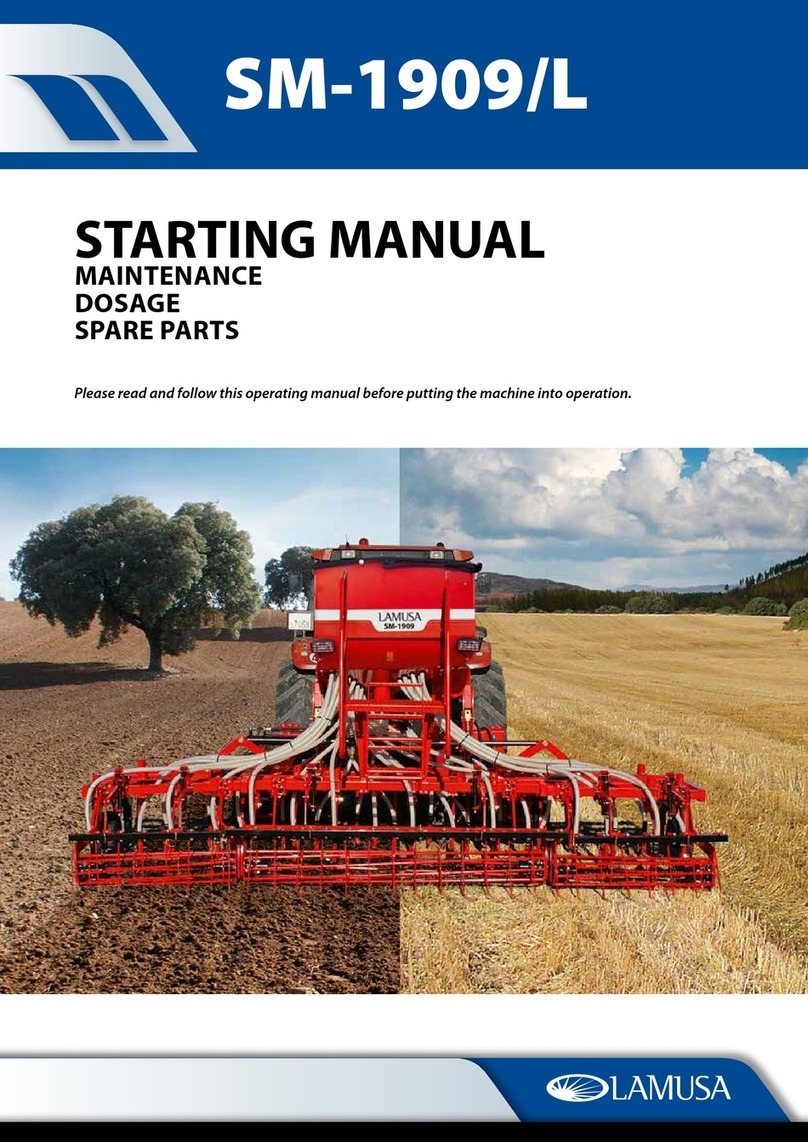
8
3- ESSENTIAL SOWING CONCEPTS
3- ESSENTIAL SOWING CONCEPTS
3.1- TERRAIN
The better the soil condition, the better the sowing quality. Work is more dicult on big clods or une-
ven furrows. Although LAMUSA machines resist harsh conditions, if the seedbed does not satisfy appro-
priate conditions then the sowing quality will suer.
3.2- THE SEED
It is essential that seeds are well maintained and clean. Barley seeds should be trimmed.
3.3- SEED PLANTING DEPTH
The recommended seed planting depths are from three to ve centimetres. Planting too deep causes
problems as rhizome cannot reach the surface and the plant will die. It does not matter that some grains
are visible because the harrow’s tines will cover them eventually.
The seed planting depth has consequences for tillering, as well as for the plant’s strength and its ability
to resist frostbite or drought. The parent shoot grows from 1 to 2 cm under the ground, whatever the
depth of the seed.
Planting deeper does not necessarily mean getting deeper roots. Only a few roots grow from the lower
part of the seed. Most of them grow from a parent shoot close to ground level.
Normal Planting Depth: from 2 to
4 cm
Thick stem, short rhizome, resistant
to frostbite
Multiple tillering providing from 3 to
6 shoots and a lot of blades, from 6
to 10.
Deep and thick roots, approximately
5 cm in width and 10-12 cm in depth.
With less grains per sowing square
metre, more ears are obtained.
Deeper Planting: from 5 to 6 cm
Fine stem, rhizome exposed to frost-
bite.
Late and weak tillering, 1 or zero
shoots and only a few blades, 3-4
aprox.
Medium quality roots of approxima-
tely 3 cm in width and 5 cm in depth
More grains per sowing square metre
are required to obtain the same num-
ber of ears as in the previous case.
Very deep planting: from 8 to 10 cm
Very ne stem. No tillering and only
one blade.
Seed runs out of supplies by growing
a long rhizome which frostbite can
easily cut.
The plant takes weak roots, appro-
ximately 1 cm in width and 3 cm in
depth.
Twice the number of grains per
sowing metre are required to obtain
the same number of ears as in the
rst case.




























